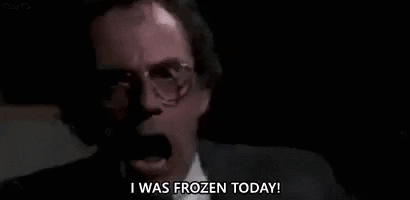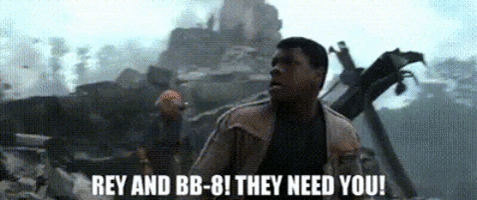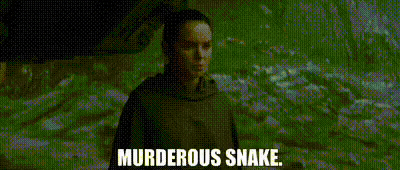In the myth, King Minos' daughter is Ariadne, and she plays an important role in the rest of the story.
We don't know who's the Mistress of the Labyrinth was, but it could have been Ariadne inasmuch as she was entitled to be the priestess of the Temple, because she was the first daughter of King Minos.
From the moment Theseus arrives in Crete to be sacrificed Princess Ariadne is drawn to him.
Ariadne notices Theseus' bearing, his courage, his unblinking gaze and is immediately smitten with him.
She's sort of overcome by the power of her love for Theseus and she immediately decides that she's going to help him, because she doesn't' want him to die in The Labyrinth as all the other figures do.
But Ariadne must act fast.
She seeks out Daedalus, the designer of the labyrinth and begs him to explain how to escape it.
What he gives her is a clue.
In old English translations of this myth, the word "clue" means a ball of twine.
This is what Daedalus gives to Ariadne.
And it's how the modern word "clue" originated.
And Daedalus said,
"Why don't you just use a ball of twine?
Tie one end to the door and then unravel it as you go into the labyrinth.
Once you're in the centre, you can find you way back out by following the twine."
We have continued to use balls of twine in underwater exploration.
The divers will tie the end of the twine to an opening in a wreck or a cave, go inside, explore and then follow the twine back out again.
Reason, which is what the Greeks honoured more than anything else, is the thing that solves the problem.
A very simple answer to what seems to be an impossible situation.
Ariadne secretly visits Theseus in his holding cell and offers him her clue on one condition - he must marry her if he survives.
When Theseus meets Ariadne he's sort of in a bind.
He's going into the middle of the labyrinth, about to be eaten alive by a Minotaur, and when Ariadne volunteers to help him he really doesn't have much of a choice.
It's either do what she asks or take his chances, and he's not going to take chances.
The next morning, 14 victims are locked inside the labyrinth.
Lambs right for the slaughter.
With his ball of twine in hand, Theseus leads the way into the maze.
Theseus ties off the ball of twine at the door and starts to walk step by step through this dark, dank tunnel.
Theseus has been offered as a human sacrifice.
It's a concept that is hard to fathom today, but evidence suggests that the real ancient Cretans not only sacrificed humans, they also may have eaten them.
Theseus, the Prince of Athens, is leading his fellow victims deeper into the labyrinth, determined to confront the Minotaur head-on.
He has a ball of twine, a clue, so that he can find his way back out.
As the beastly growls of the Minotaur grow louder, Theseus is resolute, but those trapped with him are beginning to unravel.
As the victims walk through the labyrinth one can imagine how terrified they must have been.
Just think about going into that dark space, and then as you wandered, not being able to see anything —
They knew that somewhere else in this maze, there was this horrible man-eating creature that would devour them.
You never know at what point you're going to encounter the monster.
Deep inside the maze, the Minotaur stirs.
He hears the screams of frightened victims headed his way.
And he's ready for his next feast of flesh.
This is the enemy Theseus must defeat in order to free Athens from the tyranny of Crete.
So goes the myth, but what is the link to reality?
The tension between Athens and Crete during the Bronze Age is well documented.
But were the Cretans really as savage as the myth suggests?
At Knossos palace, excavations have turned up possible evidence that suggests some truth behind the story.
Inscriptions found at the site have been interpreted by some as offerings made to the gods.
Human offerings.
There are records of a female servant being offered, and also ten males being offered.
Real people killed in ritual sacrifice, just like the victims of the Minotaur in the myth.
The suggestion is that there actually was human sacrifice being practiced on Crete.
But the evidence extends beyond inscriptions.
There are also bones that bear the markers or cold-blooded murder.
In 1979, over 300 of them were unearthed in Knossos.
Unbelievably all of them belonged to children.
About 25% of them bore cut marks made by a fine blade.
The type that would have been used to remove flesh from bone.
The bones had the marks of knives, they had cut marks on the sides of the bones, so it's hard to get around the fact that there was butchery going on here, perhaps even cannibalism.
I don't know how else one could interpret this kind of evidence.
Sheep bones were also uncovered in the same place as the human bones.
All were slashed in a similar manner.
These grate marks look a lot like the kind of marks that result from butchery of animals that are being prepared to eat.
This suggests that the ancient Cretans were not only sacrificing humans, but eating them.
Is the Minotaur's thirst for human flesh an encoded message about cannibalism?
It's the most repulsive and abhorrent crime we can ever even imagine.
It's a perfect way to demonize someone, so we can imagine that the ancient Greeks would have told the story about their great enemy, Crete, that not only were they horrible people, they were monsters and even still they were cannibals.
The myth continues.
The labyrinth's corridors are cloaked in darkness.
It is impossible for Theseus to find his way by sight.
But the grunts and growls of the Minotaur are getting louder.
They are his compass.
His ball of twine, his clue, is small now, a quarter the size it was when Theseus entered the maze.
The beast is near.
He smells the stench of blood on the walls, he sees the bones of the poor beast's prior victims.
He rounds a corner and sees a sleeping hulk.
Even the breath of the Minotaur fills him with fear.
But this is the difference between heroes and us ordinary folks, the hero feels the fear, masters it and pursues the great deed.
Theseus ambushes, catching the beast half asleep.
Theseus approaches, the Minotaur is startled, jumps up and attacks.
Axe meets sword as man battles beast.
The future of Athens and Crete hangs in the balance.
In the pre-dawn hours, the sounds of struggle pierce the night.
Inside the labyrinth, Theseus has the Minotaur cornered.
He then pounces on it, attacks Before the beast even knows what hit him, Theseus has the upper hand.
The Minotaur struggles and gasps.
The hero goes in for the kill.
The Minotaur, this tortured, trapped, terrible soul is dead.
Theseus, son of Poseidon and Prince of Athens, has destroyed the curse of King Minos.
You can imagine that his heart is pounding, his adrenaline is pumping, he's covered with the muck and blood of this dead beast and all of the other human beings that this beast has ingested over the years.
That the forces of reason as embodied by Theseus overcame the forces of irrationality as embodied by the Minotaur.
But there's no time to celebrate his victory.
Daybreak is approaching.
Theseus needs to move fast if he's going to escape the wrath of King Minos.
Once he's killed the Minotaur it's not quite over because Minos is not gonna be happy about this, of course.
So he has to retrace his steps, get out of the labyrinth, and then get back on to the ship.
He follows his thread back out and leads the still living youths of Athens out of the labyrinth.
I can imagine the joy that must have come over the kids when they saw that their fate was not what they expected, that their fate was actually changed by the deed of the hero.
Ariadne, the Princess of Crete, has spent a restless night listening for any sign of Theseus' survival.
He's promised to marry her if he escapes the Minotaur alive and she intends to hold him to it.
Just before dawn she joins him and their ship sets sail for Athens.
It's a defining moment in Greek mythology.
When Theseus slays the Minotaur the action is really a symbolic act in which we have a hero of Athens who's finally overthrowing the yoke of Crete.
It's a symbol of Greece beating Crete.
It's a symbol of human bravery and ingenuity.
So all these stories they inspired the young citizens to be faithful to their country to be able to sacrifice themselves for their city's glory and ultimately to become true citizens of a democratic city.
Theseus leaves Crete a hero, but his voyage home will end in tragedy.
When he left to fight the Minotaur Theseus promised his earthly father, King Aegeus, that he would hoist a white sail if he returned home alive to signal his victory.
Every morning for months, Aegeus would visit the same seaside cliff looking for any sign of the ship.
But when it finally appears on the horizon, its sail is black.
The King is inconsolable thinking his son has been devoured by the Minotaur.
In his grief, Aegeus leaps to his death in the sea below.
To this day, that sea is called the Aegean, after Theseus' father.
When Theseus fails to raise the white sail, the original ancient tale doesn't tell us any motivations as to why he forgets, but in the end, the original myth, seems to suggest a kind of carefreeness of youth.
That's the easiest explanation.
He was so excited by his victory, he was on his way home, and he simply just forgot to do it.
Aegeus' sudden death is a shocking development.
Theseus comes ashore not only as the liberator of Athens, but as its new King.
The King who, according to the myth, would transform the city from a backwater outpost into a regional super-power.
In this myth, Athens' rise to power is definitely credited to Theseus.
In fact, the myth seems to have been written, in part, to prove this.
In adopting Theseus as their founding hero, the Athenians were really making a statement.
They were saying that this long-time domination of Crete was now over and that there was a new top dog in town, and it was Athens.
Athens would go on to become the Greek world's dominant city state.
While Crete would collapse and be conquered.
But long after both kingdoms have faded into history, the myth of Theseus and the Minotaur endures.
And like every good myth it reveals insights into human nature that are as relevant today as they were 3,000 years ago.
There's a lot of things that one can read into the Minotaur's story, you can imagine the labyrinth as being the human mind, a dark place that we constantly explore in a conscious state, the animal nature, the nature that compels us to kill.
These myths reveal to us in a uniquely powerful way parts of ourselves that we otherwise keep hidden.
Hidden urges and desires, hidden means by which we deal with the world.
The most fundamental struggles of human experience.




